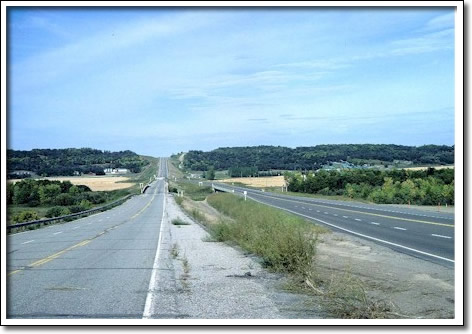Manitoba Heritage Council Commemorative Plaques
Stott Mound and Camp Site, (DlMa-1)
SW 35-10-20W, Brandon area,
R.M. of Whitehead

Designation Authority: Honourable E.F. Willis,
Minister in charge of Library and Museum
Present Owner: The Province of Manitoba and privately owned
The rich animal and plant resources of this portion of the Assiniboine River valley sustained Aboriginal peoples long before Europeans settled the area. For at least 1,200 years, hunters periodically stampeded bison down the valley slope onto the flood plain where the animals were trapped and killed with spears and arrows. Parts of the butchered carcasses were carried to camps on the slopes where meat was stripped from the bones and made into jerky and pemmican. The bones were fashioned into tools and ornaments, or smashed and boiled in clay pots to extract the marrow, or "bone butter." The hides were made into shelters, clothing and containers. Freshwater clams, fish, beaver, muskrat, and wild plants supplemented the diet of bison meat. Stone tools were fashioned from local fine-grained stone and from Knife River Flint quarried in western North Dakota.
The importance of the site was recognized by the owner Frank Stott in the 1940s.


